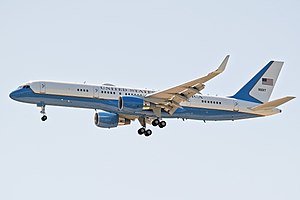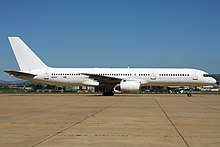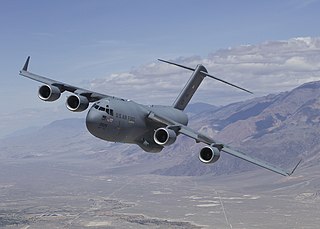
The McDonnell Douglas/Boeing C-17 Globemaster III is a large military transport aircraft that was developed for the United States Air Force (USAF) from the 1980s to the early 1990s by McDonnell Douglas. The C-17 carries forward the name of two previous piston-engined military cargo aircraft, the Douglas C-74 Globemaster and the Douglas C-124 Globemaster II.
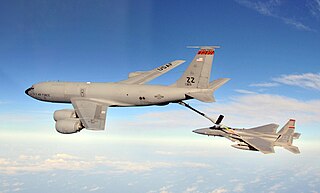
The Boeing KC-135 Stratotanker is an American military aerial refueling tanker aircraft that was developed from the Boeing 367-80 prototype, alongside the Boeing 707 airliner. It has a narrower fuselage and is shorter than the 707. Boeing gave the aircraft the internal designation of Model 717. The KC-135 was the United States Air Force (USAF)'s first jet-powered refueling tanker and replaced the KC-97 Stratofreighter. The KC-135 was initially tasked with refueling strategic bombers, but it was used extensively in the Vietnam War and later conflicts such as Operation Desert Storm to extend the range and endurance of US tactical fighters and bombers.

The Boeing 727 is an American narrow-body airliner that was developed and produced by Boeing Commercial Airplanes. After the heavier 707 quad-jet was introduced in 1958, Boeing addressed the demand for shorter flight lengths from smaller airports. On December 5, 1960, the 727 was launched with 40 orders each from United Airlines and Eastern Air Lines. The first 727-100 rolled out on November 27, 1962, first flew on February 9, 1963, and entered service with Eastern on February 1, 1964.

The Boeing 757 is an American narrow-body airliner designed and built by Boeing Commercial Airplanes. The then-named 7N7, a twinjet successor for the trijet 727, received its first orders in August 1978. The prototype completed its maiden flight on February 19, 1982, and it was FAA certified on December 21, 1982. Eastern Air Lines placed the initial 757-200 variant in commercial service on January 1, 1983. A package freighter (PF) variant entered service in September 1987 and a combi model in September 1988. The stretched 757-300 was launched in September 1996 and began service in March 1999. After 1,050 had been built for 54 customers, production ended in October 2004, while Boeing offered the largest 737 NG variants as a successor to the -200.
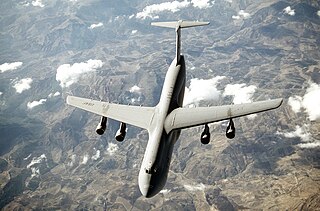
The Lockheed C-5 Galaxy is a large military transport aircraft designed and built by Lockheed, and now maintained and upgraded by its successor, Lockheed Martin. It provides the United States Air Force (USAF) with a heavy intercontinental-range strategic airlift capability, one that can carry outsized and oversized loads, including all air-certifiable cargo. The Galaxy has many similarities to the smaller Lockheed C-141 Starlifter and the later Boeing C-17 Globemaster III. The C-5 is among the largest military aircraft in the world.

The Beechcraft C-12 Huron is the military designation for a series of twin-engine turboprop aircraft based on the Beechcraft Super King Air and Beechcraft 1900. C-12 variants are used by the United States Air Force, Army, Navy and Marine Corps. These aircraft are used for various duties, including embassy support, medical evacuation, as well as passenger and light cargo transport. Some aircraft are modified with surveillance systems for various missions, including the Cefly Lancer, Beechcraft RC-12 Guardrail and Project Liberty programs.

The Boeing C-40 Clipper is a military version of the Boeing 737 Next Generation used to transport cargo and passengers. It is used by the United States Navy, Air Force, and Marine Corps. The Navy C-40A variant is named "Clipper", whereas the USAF C-40B/C variants are officially unnamed.

The Pratt & Whitney PW2000, also known by the military designation F117 and initially referred to as the JT10D, is a series of high-bypass turbofan aircraft engines with a thrust range from 37,000 to 43,000 lbf. Built by Pratt & Whitney, they were designed for the Boeing 757. As a 757 powerplant, these engines compete with the Rolls-Royce RB211.
This is a list of aviation-related events from 1996:

The Boeing C-97 Stratofreighter was a long-range heavy military cargo aircraft developed from the B-29 and B-50 bombers. Design work began in 1942, the first of three prototype XC-97s flew on 9 November 1944 and the first of six service-test YC-97s flew on 11 March 1947. All nine were based on the 24ST alloy structure and Wright R-3350 engines of the B-29, but with a larger-diameter fuselage upper lobe and they had the B-29 vertical tail with the gunner's position blanked off. The first of three heavily revised YC-97A incorporating the re-engineered wing, taller vertical tail and larger Pratt & Whitney R-4360 engines of the B-50 bomber, flew on 28 January 1948 and was the basis of the subsequent sole YC-97B, all production C-97s, KC-97s and civilian Stratocruiser aircraft. Between 1944 and 1958, 888 C-97s in several versions were built, 811 being KC-97 tankers. C-97s served in the Berlin Airlift, the Korean War, and the Vietnam War. Some aircraft served as flying command posts for the Strategic Air Command, while others were modified for use in Aerospace Rescue and Recovery Squadrons (ARRS).

The WC-135 Constant Phoenix is a special-purpose aircraft derived from the Boeing C-135 Stratolifter and used by the United States Air Force. Its mission is to collect samples from the atmosphere for the purpose of detecting and identifying nuclear explosions. It is also informally referred to as the "weather bird" or "the sniffer" by workers on the program and international media respectively.

The Boeing X-32 is a concept demonstrator aircraft that was designed for the Joint Strike Fighter competition. It lost to the Lockheed Martin X-35 demonstrator, which was further developed into the Lockheed Martin F-35 Lightning II.

The Antonov An-32 is a turboprop twin-engined military transport aircraft. Its first flight was in July 1976 and displayed at the 1977 Paris Air Show. It is oriented towards flying in adverse weather conditions, and was produced from 1980 to 2012, and remains in service. It was developed from the An-24, and the An-26 is related.

The Gulfstream V is a long-range, large business jet aircraft produced by Gulfstream Aerospace, derived from the previous Gulfstream IV. It flies up to Mach 0.885, up to 51,000 feet (16,000 m) and has a 6,500 nmi (12,000 km) range. It typically accommodates four crew and 14 passengers. It first flew on November 28, 1995, and entered service in June 1997. It is used by the US military under the designation C-37A. It is followed by an improved version, the Gulfstream 550.

The Short C-23 Sherpa is a small military transport aircraft built by Short Brothers. It was designed to operate from unpaved runways and make short takeoff and landings (STOL). It features a large squared fuselage with a full-width rear cargo door/ramp. The C-23A and C-23B are variants of the Short 330 and the C-23B+ is a variant of the Short 360. 60 aircraft were used it was finally retired from US service in 2014, but remains in international service. Although it was widely used for other uses it was originally the winner of an early 1980s competition for a light cargo aircraft to deliver cargo, especially aviation parts, for EDSA. While the C-23 was a new production, as was the C-23B, the C-23B+ were actually Shorts 360, with the tail and rear fuselage of a C-23. One of the differences between the C-23 and C-23B, is that the later had cabin windows. The aircraft has a substational amount of civilian use and also was operated by the U.S. Forestry Service and NASA for example. The NASA C-23 is still in service and used for research. The aircraft continues in service with the Philippines and Djibouti, as well as various civilian and governmental agencies, such as the aforementioned NASA research Sherpa.

Air Force Two is the air traffic control designated call sign held by any United States Air Force aircraft carrying the vice president of the United States, but not the president. The term is often associated with the Boeing C-32, a modified 757 which is most commonly used as the vice president's transport. Other 89th Airlift Wing aircraft, such as the Boeing C-40 Clipper, C-20B, C-37A, and C-37B, have also served in this role. The VC-25A, the aircraft most often used by the president as Air Force One, has also been used by the vice president as Air Force Two.

The 172nd Airlift Wing is a unit of the Mississippi Air National Guard, stationed at Allen C. Thompson Field Air National Guard Base, Mississippi. If activated to federal service, the Wing is gained by the United States Air Force Air Mobility Command.
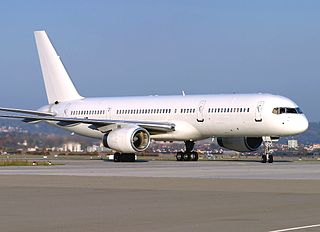
The 150th Special Operations Squadron, equipped with the C-32B aircraft, is a unit of the 108th Wing of the New Jersey Air National Guard. It provides global airlift to special response teams within the Department of Defense and other agencies.
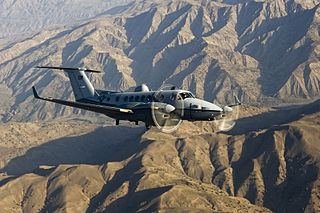
The 185th Special Operations Squadron is a unit of the Oklahoma Air National Guard's 137th Special Operations Wing, located at Will Rogers World Airport, Oklahoma City, Oklahoma. The 185th is the only National Guard unit to be equipped with the MC-12W. The unit is known as the "Sooners". Famous unit alumni include former Vietnam prisoner of war Brig. Gen. James Robinson "Robbie" Risner and Astronaut Captain Fred Wallace Haise Jr., Apollo 13 Lunar Module Pilot.
Comco is the de facto name of an American company operating two Boeing 757 aircraft.
